Abstract
Looking at data on leafy vegetables in Japanese agriculture, especially summer onions, we can see that the harvest volume in 2022 will be the highest nationwide at 89.7kt, the cultivated area will be 4.8kha, and the shipping volume will be the highest in Ibaraki at 14.5kt. The trends and characteristics that can be inferred from these figures are, first of all, that the production volume of summer onions is at a stable and high level nationwide. Also, since Ibaraki is the top in terms of shipping volume, this region is likely to be a major producer of summer onions. As there have been no major fluctuations in the area cultivated, it is believed that farmers’ investment in summer onion cultivation is being maintained at a constant level due to improved productivity and stable demand. Demand for summer onions is likely to continue to increase in the future, so diversifying production areas and introducing efficient cultivation techniques will be important.
Summer onion harvest yield (main data).
Looking at data from 1976 to 2022, summer onion harvests have fluctuated. In 2000, the national traffic peaked at 108kt, but has since declined slightly and is currently at 82.7%. Based on this trend, it is possible that factors affecting the demand and production of summer onions may be changing. For example, these could include changes in consumer preferences and lifestyles, or fluctuating climatic conditions. Improvements in agricultural technology and cultivation methods may also be a factor, making production more efficient. This data shows that summer onion production is supported by a certain level of demand, but the decline from its peak is likely due to changes in the market and technological innovations. In the future, sustainable production will be required, taking into account changes in demand and the effects of climatic conditions.
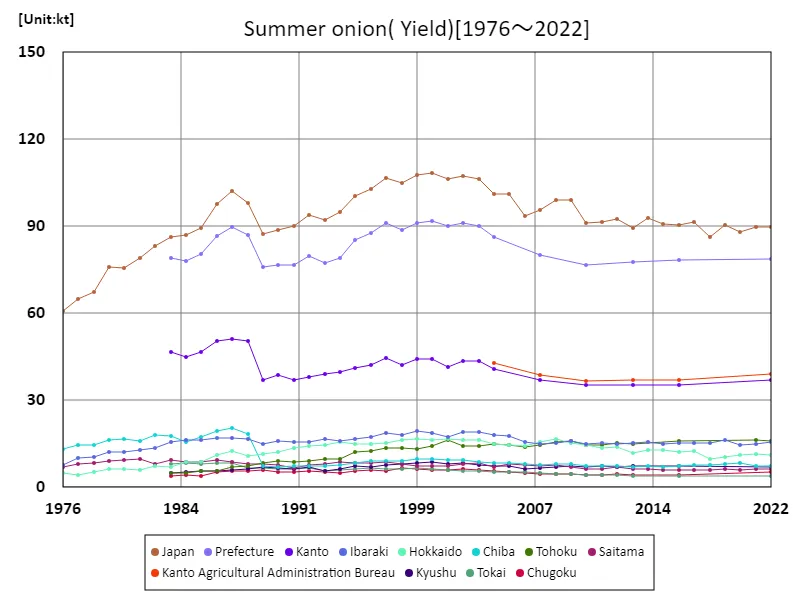

The maximum is 108kt[2000] of Japan, and the current value is about 82.7%
Summer onion harvest volume (by prefecture).
In Japan’s agricultural leafy vegetable harvest, Ibaraki Prefecture recorded the highest overall yield of 15.7kt in 2022, the most recent year, and is currently at its highest. This indicates that Ibaraki Prefecture is a major producer of leafy vegetables. We can also see that Ibaraki Prefecture’s harvest volume is exceptionally high compared to the production volumes of other prefectures. These characteristics mean that Ibaraki Prefecture is in an advantageous position to produce leafy vegetables, benefiting from local climatic conditions and agricultural techniques. Also, based on past trends, Ibaraki Prefecture’s production volume may have always been ranked higher than other regions. It is assumed that the region’s unique production environment and the technical capabilities of farmers play an important role in this. It will be important for each region, including Ibaraki Prefecture, to continue to aim for sustainable production and supply leafy vegetables according to demand.
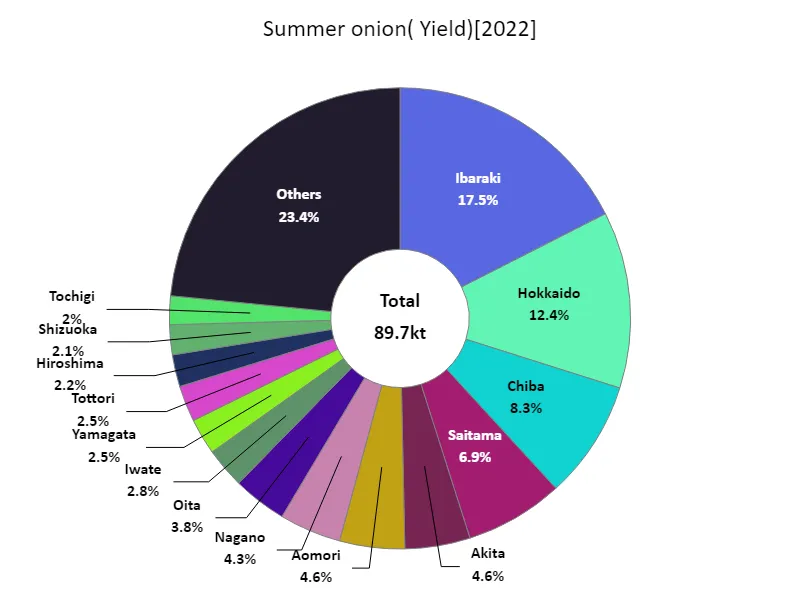

The maximum is 15.7kt of Ibaraki, the average is 1.91kt, and the total is 89.7kt
Area planted with summer onions (main data).
Analyzing data from 1976 to 2022, the area planted with summer onions has fluctuated. The peak was recorded in 1999 at 5.57kha nationwide, but it has declined slightly since then and is currently at 86.2% of the peak level. Based on this trend, it is possible that factors affecting the demand and production of summer onions may be changing. For example, this could be due to changes in market demand, switching to other crops, or changes in agricultural policies. Also, climatic conditions and improvements in agricultural techniques that affect summer onion production should be taken into account. Based on this data, it appears that the area planted with summer onions fluctuates according to a certain demand, and the decrease from the peak is due to multiple factors. In the future, we will need to aim for sustainable production while responding flexibly to changes in demand and fluctuations in climatic conditions.
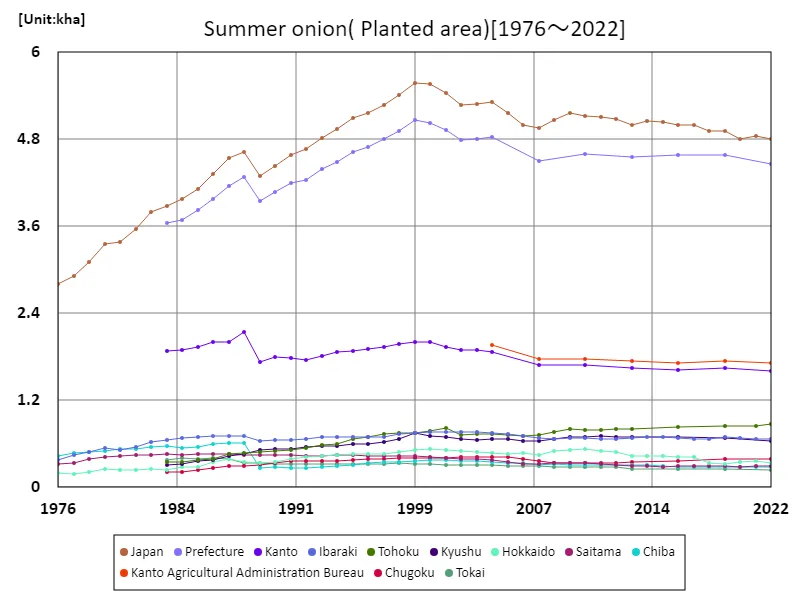

The maximum is 5.57kha[1999] of Japan, and the current value is about 86.2%
Area cultivated with summer onions (by prefecture).
Looking at data on the planting area of leafy vegetables for 2022, the largest overall is Ibaraki Prefecture at 665 hectares, which is also the current value. It is clear that Ibaraki Prefecture is a major producer of leafy vegetables. Compared to other prefectures, Ibaraki Prefecture’s cultivated area is exceptionally high. These characteristics give Ibaraki Prefecture an advantage in the production of leafy vegetables. Additionally, based on past trends, it is possible that Ibaraki Prefecture has consistently accounted for the majority of the cultivated area. This is likely due to the region’s climatic conditions, agricultural techniques, and the efforts of local farmers. It is important that each region, including Ibaraki Prefecture, continue to strive for sustainable production and continue to supply leafy vegetables in response to demand. Other regions also need to work to improve agricultural techniques and adopt sustainable cultivation methods to become more competitive.
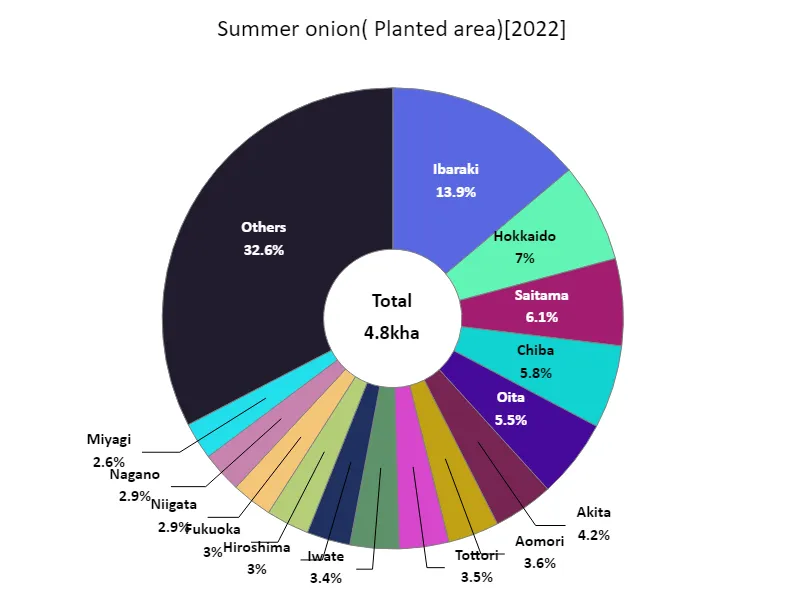

The maximum is 665ha of Ibaraki, the average is 102ha, and the total is 4.8kha
Shipping volume of summer onions.
Data on summer onion shipments for 2022 shows that Ibaraki Prefecture recorded the highest overall shipment of 14.5kt, with an average of 1.71kt and a total of 80.3kt. Ibaraki prefecture had the largest shipment volume, clearly indicating that this region is a major producer of summer onions. In addition, the total shipping volume was 80.3kt, indicating that demand for summer onions is relatively high. Summer onions are popular with many consumers, suggesting that demand is remaining at a constant level. A historical trend is that certain regions, including Ibaraki Prefecture, have played a leading role in summer onion production. The region’s excellent production environment and agricultural techniques may be contributing to the increase in shipping volumes. In the future, it will be important to diversify summer onion production areas and adopt sustainable production methods while responding flexibly to changes in demand and the effects of climatic conditions.
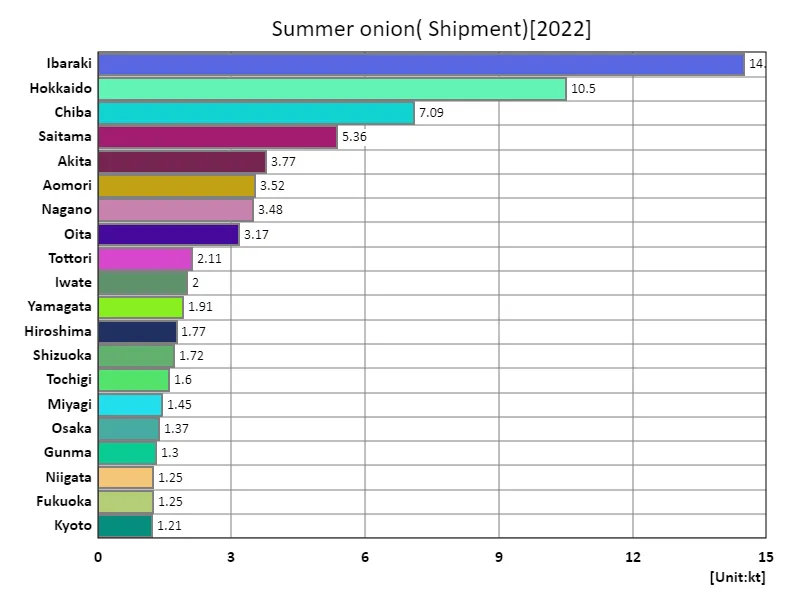

The maximum is 14.5kt of Ibaraki, the average is 1.71kt, and the total is 80.3kt
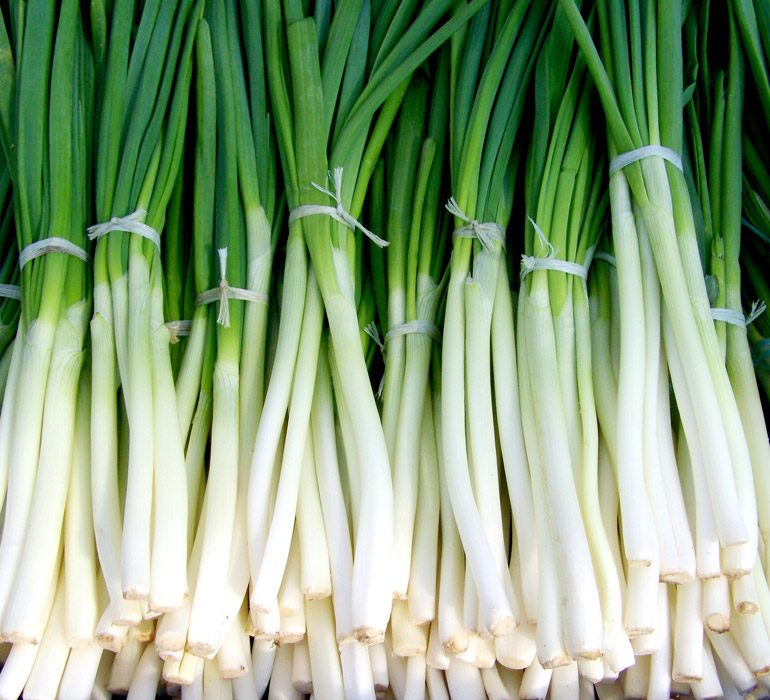


Comments